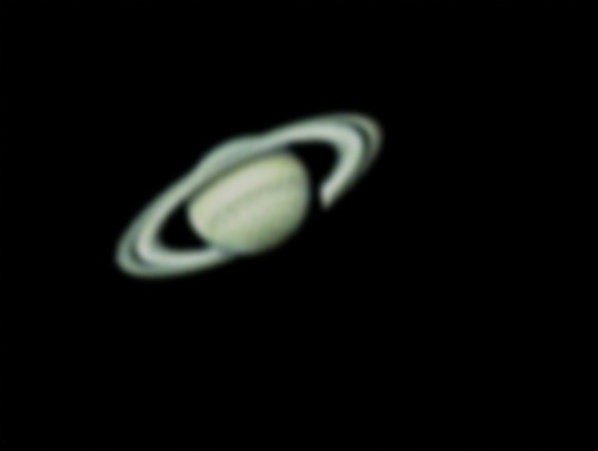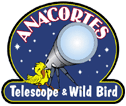Kiss the Sky Tonight -- Month of October 2021

Big, beautiful spiral galaxy NGC 7331 (also known as Caldwell 30 or C30) is often touted as an analog to our own Milky Way. About 50 million light-years distant in the northern constellation Pegasus, NGC 7331 was recognized early on as a spiral nebula and is actually one of the brighter galaxies not included in Charles Messier's famous 18th century catalog of M-objects. Since the galaxy's disk is inclined to our line-of-sight, long telescopic exposures often result in an image that evokes a strong sense of depth. This Hubble Space Telescope close-up spans some 40,000 light-years. The galaxy's magnificent spiral arms feature dark obscuring dust lanes, bright bluish clusters of massive young stars, and the telltale reddish glow of active star forming regions. The bright yellowish central regions harbor populations of older, cooler stars. Like the Milky Way, a supermassive black hole lies at the core of spiral galaxy NGC 7331. [Video and Content Credits: NASA, the Office of Public Outreach – Space Telescope Science Institute (STScI), JPL – Caltech, Preston Dyches, Christopher Harris, and Lisa Poje] [Image Credit: ESA, Hubble, NASA, and D. Milisavljevic (Purdue University)]
Kiss the Sky Tonight -- Month of October 2021
Welcome to the night sky report for October 2021 -- Your guide to the constellations, deep sky objects, planets, and celestial events that are observable during the month. The crisp, clear October nights are full of celestial showpieces for the backyard sky gazer. Find Pegasus, the flying horse of Greek myth, to pinpoint dense globular star clusters and galaxies. Look for M15, NGC 7331, and M31 - the Andromeda Galaxy. The night sky is truly a celestial showcase. Get outside and explore its wonders from your own backyard.
Face southeast after dark to find Pegasus, the flying horse of Greek myth, soaring high into the sky. The prominent square of stars that forms the body makes Pegasus a good guidepost for the autumn sky.
Along the western side of the Great Square of Pegasus lies the star 51 Pegasi. It is notable as the first Sun-like star discovered to harbor an orbiting planet.
Farther west, near the star Enif, which marks the horse’s nose, lies an entire city of stars: the globular star cluster M15. Backyard telescopes show a grainy, concentrated sphere of light. But NASA’s Hubble Space Telescope shows a stunning globe of ancient stars with many red giants. M15 is one of the densest globular star clusters known in the Milky Way galaxy.
Near the Great Square resides an even larger star city: the galaxy NGC 7331. In a telescope, the nearly edge-on spiral galaxy appears as an elongated smudge of faint light. The Hubble view shows that NGC 7331 is a galaxy very similar in size and structure to our own. NASA’s Spitzer Space Telescope’s view of the galaxy, which highlights infrared light, reveals a ring of dust circling the galaxy’s center at a radius of nearly 20,000 light-years. Spitzer measurements suggest that the ring contains enough gas to produce four billion stars like the Sun.
The brightest star of the Pegasus Great Square, named Alpheratz, marks the head of the princess Andromeda. Beside the Andromeda constellation is M31, the Andromeda Galaxy. Visible in dark skies as an elongated patch of light, the galaxy, at 2.5 million light-years distant, is the farthest object that can be seen with the unaided eye. Binoculars and small telescopes clearly show its nearly edge-on shape. NASA’s GALEX mission imaged the ultraviolet light from the Andromeda Galaxy and shows its core and spiral arms traced by hot, massive, young blue stars and dark dust lanes. Andromeda is the nearest large galaxy to our own. Studies indicate that Andromeda is approaching and will collide and merge with the Milky Way more than four billion years from now.
On October 10th look for the five-day-old crescent Moon to join Venus and bright, orange-colored Antares in the southwest after sunset. Then watch as Venus closes on Antares, for a close conjunction on the 15th and 16th, where the two will be only about a degree and a half apart.
During the last week of October, Mercury pops briefly into view for early risers.
Look for it about 10 degrees above the eastern horizon, or about the width of your fist held at arm's length, about 30-45 minutes before sunrise.
Then on October 30th, in the last couple of hours before daybreak, look for the 24-day-old crescent Moon to join brilliant blue-white star Regulus.
All month long, look high overhead early in the evening to find two bright stars that take turns with Polaris being the North Star. Their names are Vega and Deneb. Both of these stars are part of the Summer Triangle, along with Altair. To find Vega and Deneb, look high overhead in the first few hours after it gets dark. They'll be two of the brightest stars you can see.
Vega is a bluish-white star, and like Altair, it's a fast rotator, spinning every 12 and a half hours, compared to the Sun's 27-day rotation. NASA's Spitzer Space Telescope found Vega to have a debris disk around it that could be similar to regions in our own solar system.
Deneb is a blue-white supergiant star that is fusing hydrogen at a phenomenal rate.
With this sort of fury, the party won't last all that much longer. Deneb is likely headed for an explosive end as a supernova within a few million years. Deneb is much farther away than most bright stars in our night sky. This means it's SUPER luminous to be that bright from so far away. Because it's so bright, it's one of the most distant stars you can see with the unaided eye.
These stars rotate around the northern celestial pole, and this time of year, they dip toward the western horizon before setting in the pre-dawn hours. Both Vega and Deneb are part of a special group of stars that take turns being the pole star in the north, as Earth's axis wobbles in a circle over a period of 26,000 years. For now the distinction of "North Star" belongs to Polaris, for at least a few hundred years more.
The night sky is always a celestial showcase. Explore its wonders from your own backyard.
The following Deep Sky Objects are found in constellations that peak during the month. Some can be viewed with a small telescope, but the majority will require a moderate to large telescope. The following is adapted from my personal viewing list: "The Guy Pirro 777 Best and Brightest Deep Sky Objects."
Constellation: Andromeda
NGC 205 Galaxy M110 Herschel 400 H18-5 Satellite of Andromeda
NGC 221 Galaxy M32 Satellite of Andromeda
NGC 224 Galaxy M31 Andromeda Galaxy
NGC 404 Galaxy Herschel 400 H224-2
NGC 752 Open Cluster C28, Herschel 400 H32-7
NGC 891 Galaxy C23, Herschel 400 H19-5
NGC 956 Open Cluster P123
NGC 7640 Galaxy P218
NGC 7662 Planetary Nebula C22, Herschel 400 H18-4 Blue Snowball Nebula
NGC 7686 Open Cluster Herschel 400 H69-8
Constellation: Cassiopeia
IC 10 Galaxy P77
IC 59 Diffuse Nebula P21 - Gamma Cassiopeiae Nebula (West)
IC 63 Diffuse Nebula P22 – Gamma Cassiopeiae Nebula (East)
IC 166 Open Cluster P217
IC 1795 Diffuse Nebula P122
IC 1805 Emission Nebula P2 Heart Nebula
IC 1848 Emission Nebula P3 Soul Nebula
IC 1871 Diffuse Nebula P136
NGC 103 Open Cluster P137
NGC 129 Open Cluster Herschel 400 H79-8
NGC 133 Open Cluster P138
NGC 136 Open Cluster Herschel 400 H35-6
NGC 146 Open Cluster P204
NGC 147 Galaxy C17 Satellite of Andromeda
NGC 185 Galaxy C18, Herschel 400 H707-2 Satellite of Andromeda
NGC 189 Open Cluster P5
NGC 225 Open Cluster Herschel 400 H78-8 Sailboat Cluster
NGC 278 Galaxy Herschel 400 H159-1
NGC 281 Emission Nebula P4 Pacman Nebula
NGC 381 Open Cluster Herschel 400 H64-8
NGC 436 Open Cluster Herschel 400 H45-7
NGC 457 Open Cluster C13, Herschel 400 H42-1 Owl Cluster
NGC 559 Open Cluster C8, Herschel 400 H48-7
NGC 581 Open Cluster M103
NGC 609 Open Cluster P219
NGC 637 Open Cluster Herschel 400 H49-7
NGC 654 Open Cluster Herschel 400 H46-7
NGC 659 Open Cluster Herschel 400 H65-8
NGC 663 Open Cluster C10, Herschel 400 H31-6
NGC 1027 Open Cluster Herschel 400 H66-8
NGC 7635 Diffuse Nebula C11 Bubble Nebula
NGC 7654 Open Cluster M52
NGC 7788 Open Cluster P139
NGC 7789 Open Cluster Herschel 400 H30-6 White Rose Cluster
NGC 7790 Open Cluster Herschel 400 H56-7
NGC 7795 Open Cluster P23
Constellation: Pegasus
NGC 7078 Globular Cluster M15
NGC 7217 Galaxy Herschel 400 H207-2
NGC 7331 Galaxy C30, Herschel 400 H53-1
NGC 7448 Galaxy Herschel 400 H251-2
NGC 7457 Galaxy P173
NGC 7479 Galaxy C44, Herschel 400 H55-1
NGC 7814 Galaxy C43
Constellation: Pisces
NGC 488 Galaxy Herschel 400 H252-3
NGC 524 Galaxy Herschel 400 H151-1
NGC 628 Galaxy M74
NGC 676 Galaxy P175
Constellation: Sculptor
NGC 55 Galaxy C72
NGC 134 Galaxy P116
NGC 253 Galaxy C65, Herschel 400 H1-5 Sculptor Galaxy
NGC 288 Globular Cluster Herschel 400 H20-6
NGC 300 Galaxy C70
NGC 613 Galaxy Herschel 400 H281-1
NGC 7507 Galaxy P117
- NGC 7513 Galaxy - Paired with P117
NGC 7793 Galaxy P61
For more information:
Northern Latitudes:
https://hubblesite.org/resource-gallery/learning-resources/tonights-sky
https://nightsky.jpl.nasa.gov/planner.cfm
https://solarsystem.nasa.gov/skywatching/home/
https://solarsystem.nasa.gov/skywatching/whats-up/
https://www.cfa.harvard.edu/skyreport
http://outreach.as.utexas.edu/public/skywatch.html
https://griffithobservatory.org/explore/observing-the-sky/sky-report/
http://www.beckstromobservatory.com/whats-up-in-tonights-sky-2/
https://www.fairbanksmuseum.org/planetarium/eye-on-the-night-sky
http://dudleyobservatory.org/tonights-sky/
https://cse.umn.edu/mifa/starwatch/2021
http://www.schoolsobservatory.org.uk/learn/astro/nightsky/maps
https://tonightssky.com/MainPage.php
https://www.skymania.com/wp/your-night-sky-this-month/
https://earthsky.org/astronomy-essentials/visible-planets-tonight-mars-jupiter-venus-saturn-mercury
https://www.pbs.org/seeinginthedark/explore-the-sky/your-sky-tonight.html
https://www.timeanddate.com/astronomy/night/
https://www.stelvision.com/en/sky-map/
https://www.adventuresci.org/starcharts
https://www.astromart.com/news/search?category_id=3&q=kiss+the+sky&from=&to
Equatorial Latitudes:
http://www.caribbeanastronomy.com/index.php?option=com_content&task=blogcategory&id=30&Itemid=51
Southern Latitudes:
https://www.scitech.org.au/explore/the-sky-tonight/
https://www.stardome.org.nz/astronomy/star-charts/
Watch Satellites Pass Over Your Location:
https://james.darpinian.com/satellites/
Astromart News Archives:
https://www.astromart.com/news/search?category_id=3&q=.
Do you enjoy reading these postings?
Then click here and buy the Astromart staff a cup of coffee (and maybe even some donuts):
https://astromart.com/support-options
Funding Member
Sponsors
- OMI OPTICS USA LLC
- Anacortes Telescope
- FocusKnobs
- SellTelescopes.com
- Rouz Astro
- ASTROPHOTOGRAPHY BY MARTIN PUGH
- Desert Sky Astro Products
- BBLABS LLC
- Astromart Customer Service
- RemoteSkies.net
- AstroMart LLC
- Matsumoto Company
- Waite Research
- APM-Telescopes
- astronomy-shoppe
- Bob's Knobs
- BW
View all sponsors



